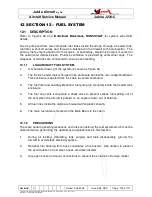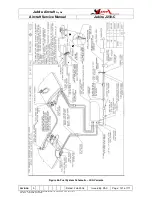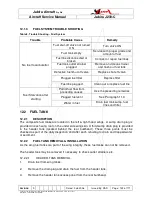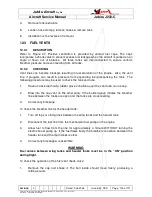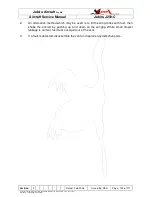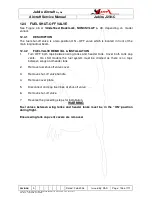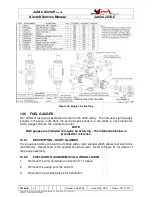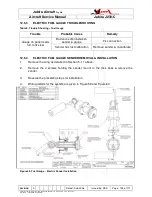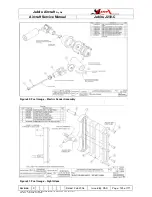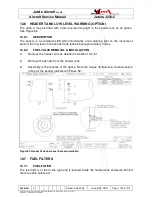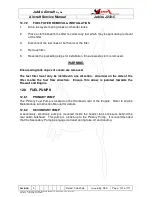
Jabiru Aircraft
Pty Ptd
Aircraft Service Manual
Jabiru J230-C
REVISION
0
Dated : Feb 2006
Issued By: RAS
Page: 134 of 171
L:\files\Technical_manuals\J230_J430\J230.J430_Work_files\J230-C_Tech_Rev_1.doc
Print Date: 14/01/2009 4:41:00 PM
Figure 54. Instrument Panel Layout – “Glass” Instrument Panel
13.2.3
INSTRUMENT REMOVAL
Most instruments are secured to the panel with screws inserted through the panel face.
To remove an instrument, disconnect wiring or pluming to the instrument, remove
mounting screws and take instrument out from behind, or in some cases, from the front of
the panel.
In all cases when an instrument is removed, disconnected lines or wires should be
protected. Cap open lines and cover pressure connections on instrument to prevent
thread damage and entrance of foreign matter. Wire terminals should be insulated or tied
up so that accidental ground or short-circuiting will not occur.
13.2.4
INSTALLATION
Generally, the installation procedure is the reverse of the removal procedure. Ensure
mounting screws and nuts are tightened firmly, but do not over-tighten, particularly on
instruments having plastic cases. The same rule applies to connecting plumbing and
wiring.
13.3 PITOT & STATIC SYSTEMS
Refer to Figures 55, 56 and 57. (Also Figure 10 where the aircraft is equipped with an
AOA probe)
The pitot system conveys ram air pressure to the airspeed indicator. The static system
vents vertical speed indicator (if fitted), altimeter and airspeed indicator to atmospheric
pressure through plastic tubing connected to a static port. The pitot and static systems
each have a water trap fitted, as shown in Figure 55, which must be checked during
scheduled maintenance or after flying through rain.

